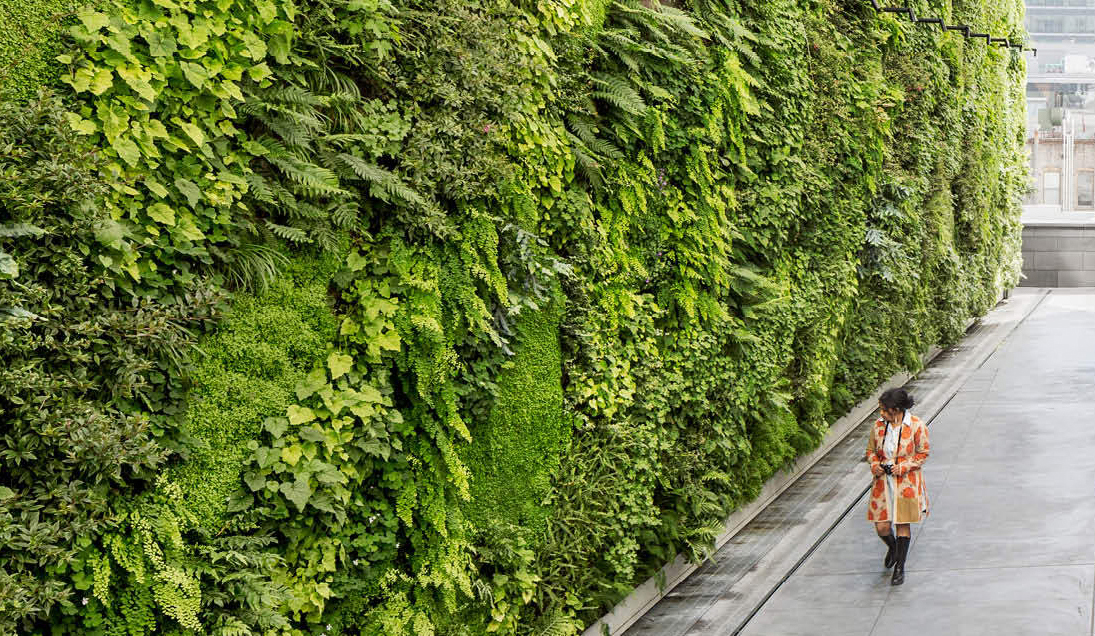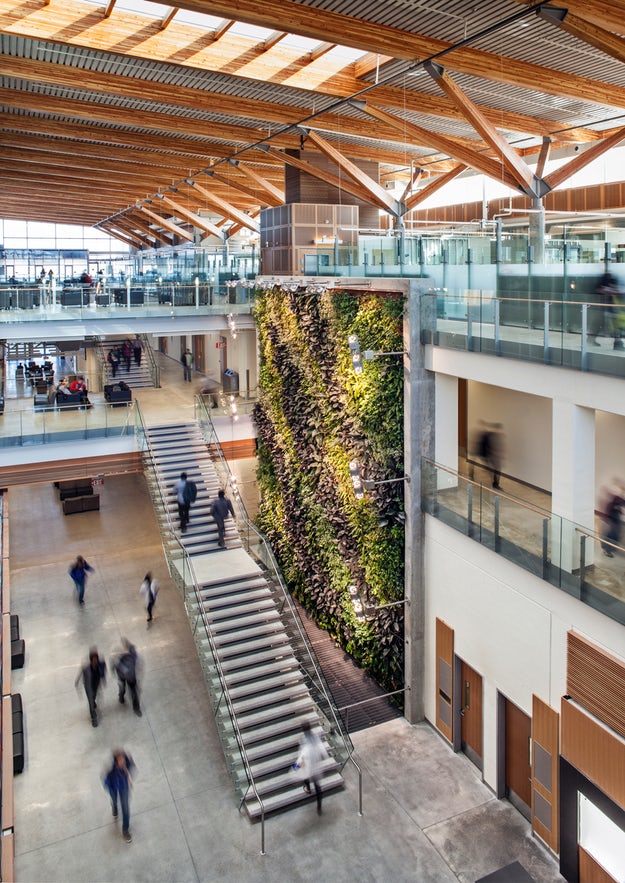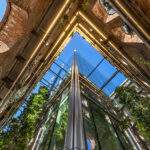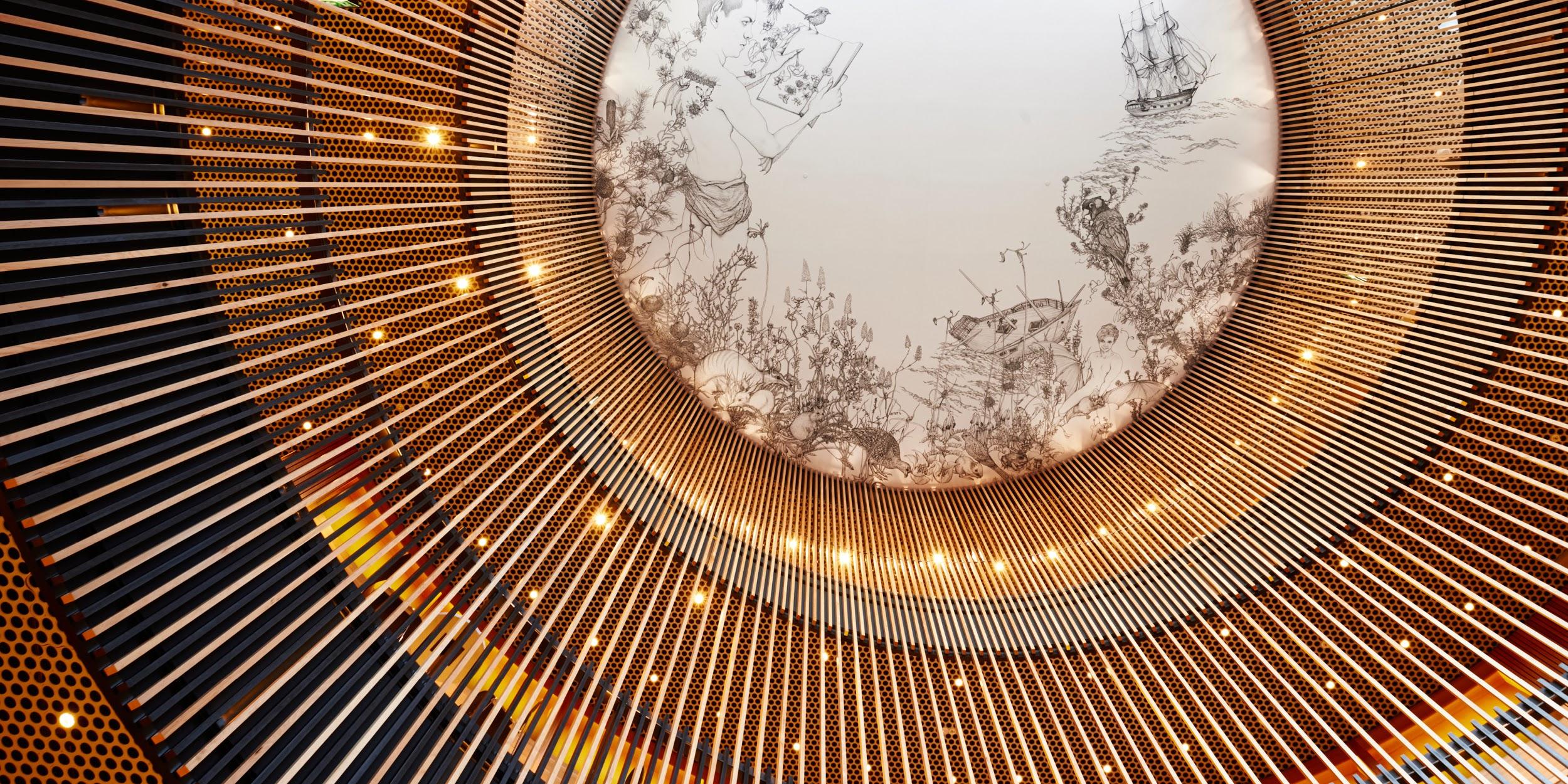The votes are in, and Architizer is thrilled to unveil the winners of the A+Product Awards! Register for Architizer's A+Product Awards Newsletter to receive future program updates.
Sometimes is feels like green walls are one of those modern design fads, but despite their growing visibility and exponential popularity, green walls actually date way, way back. The idea to create a living green wall was first patented by Stanley Hart White in 1938 and was later popularized by French botanist Patrick Blanc. As a result of his work at the Musée du Quai Branly in Paris, Blanc is often designated the godfather of green walls.

Musée du Quai Branly in Paris; image via Greenroofs
Today, a green wall is understood as a vertical wall that is partially or completely covered in vegetation. A carefully planned and executed growing medium is the backbone of any green wall. In order to help architects enliven their future projects with green walls, we spoke with Zachary Smith, Senior Marketing Manager at specialist green wall manufacturer sagegreenlife. According to Smith, “Living walls are visually stunning, yes, but there is much more than meets the eye. One of our goals as a company is to promote the positive effects that plants have on individuals’ mental and physical wellness, a key benefit in and of itself.”
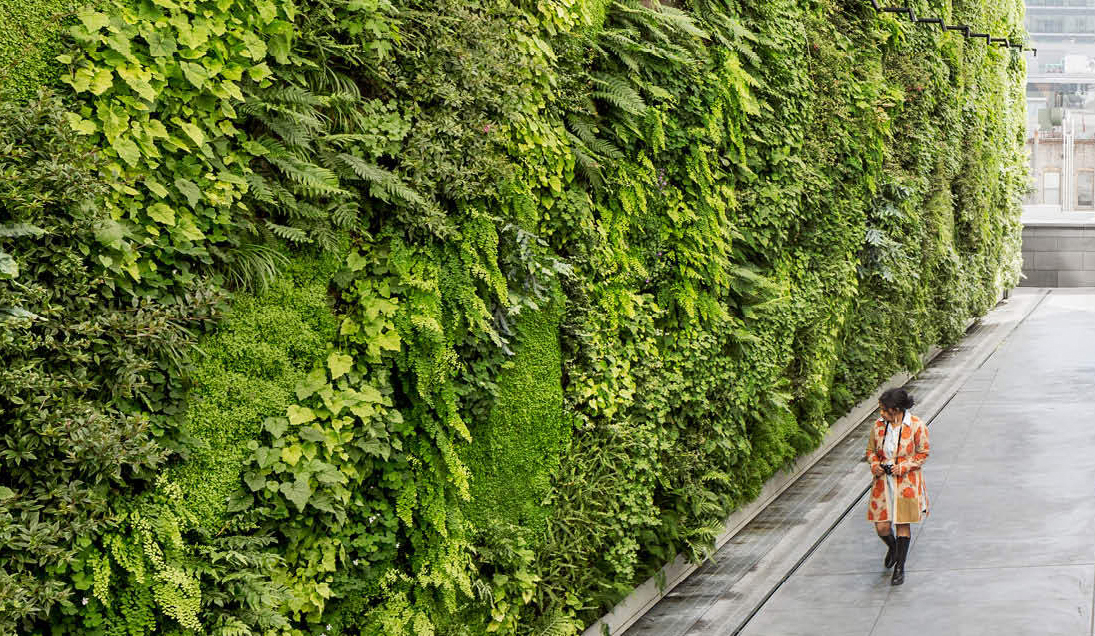
It is important to note that green walls are also widely referred to as living walls, vertical gardens and eco walls. This guide will help you with your research as you explore the possibility of a green wall for your next project.
Search for Green Wall Manufacturers

Caixa Forum by Herzog & de Meuron, green wall by Patrick Blanc; image via B-STYLE
Green Wall Systems
Today, green walls can be categorized into three types of common systems: panel/modular systems, tray systems and freestanding walls. A sound understanding of all three types will help you identity which one is best-suited for the scope of your project.

Diagram of sagegreenlife’s custom living wall system; Image courtesy of sagegreenlife
Panel/modular systems: Plants are pre-grown into panels that can be used inside or outside, and in any type of climate. A phenomenal example of a panel green wall system is sagegreenlife’s Custom Built-In Living Walls. As Smith explained, “Setup is minimally disruptive and our living walls are installed fully grown for an immediate visual impact.” These plants are cultivated 6-8 weeks prior to the installation date.
Sagegreenlife’s Custom Built-In Living Walls consist of four main components:
- Studs: Standard 2″ by 4″ wood elements that the green wall attaches back to.
- Backer board material: This layer is composed of marine grade plywood or PVC board.
- Drainage mat: In the event that an irrigation tube leaks, the drainage mat will prevent water damage to the building.
- Modular tile: This uses a layered basalt rock fiber (known as Rockwool) that evenly distributes water, oxygen and nutrients. It does not decay or break down over time, and provides an ideal rooting and growing environment.
“Our living wall system is designed to be attached and fixed to an existing structure or integrated into an entirely new development. Having a modular design allows architects to unleash their creativity to transform nearly any wall or structural surface,” Smith said.

Left: Diagram of the Versa Wall tray system; Right: Versa Wall installed in the office setting; images via GSky
Tray systems: Plants are pre-grown off-site and inserted into the wall, which allows for a great degree of design flexibility, especially since trays can be easily removed and replaced. Typically cheaper than panel systems, tray systems are most commonly used in interior settings. An excellent example of a tray green wall system is GSky’s Versa Wall.
With tray systems, each individual tray is designed to hold a measured amount of water, which means that plants do not have to compete for hydration. Also, because of the orientation of the trays, neither soil nor water spills forward, which makes them suitable for indoor environments.
Tray systems also come with distinct challenges. Since the plants are rooted in soil, tray systems can lead to bugs, fungus, mold and even pathogens. Therefore, they often have to replaced at least every month, which can be costly and inefficient. Smith noted that in past experiences of working in the healthcare setting, clients were adamant to use soil-free systems that comply with a building’s hygiene and health safety codes. In these instances, tray systems would be an inappropriate solution.

Verdanta Collection by sagegreenlife; image courtesy of sagegreenlife
Freestanding walls: Freestanding walls are smaller, movable living walls that can be placed in indoor or outdoor settings. They can be placed against a wall or in the middle of a room, and are ideal for temporary spaces or floor plans that change over time. They can also be used as partitions or room dividers. An example of a freestanding wall is sagegreenlife’s Verdanta Collection.

Sagegreenlife’s custom wall drip irrigation system; image courtesy of sagegreenlife
Water Management Systems
Drip Irrigation System: Most custom living green walls are hydroponic systems that are irrigated by a drip irrigation method. These systems link an Irrigation Control Box (ICB) directly into the building’s plumbing system. Using horizontal irrigation tubing, drip irrigation systems are self-watering, and can be set to release based on a timed schedule. According to Smith, drip irrigation tubing is 85% more water efficient than a water tank system.
Tank Systems: Tray systems and freestanding walls are essentially just “water tanks.” These need to be manually filled and refilled. Tray systems are not typically tapped into the building’s water source and therefore require more ongoing labor. They are also less water efficient because they do not automatically recycle unused water.
Search for Green Wall Manufacturers

One Central Park by Ateliers Jean Nouvel; image via ArchDaily
Aesthetics
Plant Species: The plant species that you use will depend on your aesthetic preferences as well as the climate and setting that you plan to install your green wall. When working with sagegreenlife, each project involves a Senior Horticulturist who can make these recommendations. Sagegreenlife, for example, works with over 100 species of plants.
Smith said, “On all of our projects, we essentially become ‘Living Wall Consultants’. We work hand-in-hand with architects and lighting designers to make sure that the selected plants will thrive.” While succulents are very popular as a result of their desirable aesthetic qualities, they are rarely included in green walls, as they are very top heavy and do not root well. “The biggest enemy is gravity,” Smith said.

© DAVID FRUTOS
CAFETERIA WITHIN A GREEN WALL by Antonio Maciá A&D
Plant Survival: According to Smith, custom modular systems offer the highest chance of plant survival, at a rate of 95-97% survivability. “If you have plants that fail, it is most likely because the plants around them are growing more aggressively. This means they are taking away nutrients and light that the plant needs to survive. Since the neighboring plant has grown so aggressively and filled in where the other one would be, nine times out of ten you can’t even tell,” Smith said.
As the technology behind green walls is reasonably new, it is difficult to definitively declare the lifespan of live green walls. The hardware, panels and growth media can last up to 25 years, however there will be much more variation in how long the plants themselves survive.
Light: Historically, light for plants is measured in terms of foot candles. Smith recommends using LED lights at a minimum of 1,200 foot candles — this is the “bare minimum,” Smith said. “Generally speaking, the stronger the better, but this will really depend on the size of the wall.”
Sensors: Sagegreenlife is currently in the works of integrating sensors into their green walls. These sensors provide real-time notifications when plants are not being watered properly or when they appear to be dying. Sensors also indicate where in the wall the error is occurring. Smith suspects that this feature will soon become an industry standard.

© Kalson Ho | Over and Over Studio
SK Yee Healthy Life Centre by Ronald Lu & Partners
Shape: Soft, curvilinear walls suggest movement and flow, while sharp angles suggest a more modern design. If you are looking to create curved walls, sagegreenlife’s modular tile system will allow you to adapt to the complex shape of any curved wall or column. To support the installation of these types of challenging projects, sagegreenlife typically partners with Ambius — a leading expert in interior landscaping.
Size: According to Smith, “architects underestimate our systems’ scalability and versatility.” If you are looking to create a large-scale green wall, modular systems like sagegreenlife’s custom living walls will allow you to scale up with ease.
Brand Elements: When building a green wall, it is possible to arrange the plants into a customized pattern, which may render readable text or symbols. Many architects have harnessed this approach to showcase their business logos.
There is plenty of opportunity to customize a living green wall. However, it is an involved process that should leverage the expertise of a green wall manufacturer very early on in the design process.
Case Studies

One Central Park by Ateliers Jean Nouvel; Green wall by Patrick Blanc and Junglefy
It’s Alive! 5 Huge, Lushly Planted Living Façades
Green walls help bring architecture to life, creating dynamic façades that sway in the breeze and change with the seasons. These dense façade coverings not only transform bland surfaces into botanical masterpieces, they also create highly-efficient building envelopes, minimizing heat loss and cooling loads, reducing rainwater runoff and filtering pollutants out of the air.
Growing Up: Specifying Green Walls for Every Architectural Typology
A beautiful green wall expresses movement and life, an evolving ecosystem that connects people through fragrance, texture and pattern. Green walls bring new dimensions to architecture, and in doing so, inspire change. The following collection of green walls show how you can transform surfaces in your design to draw out the qualities of vertical atriums, inspire movement, and create space for reflection.
The votes are in, and Architizer is thrilled to unveil the winners of the A+Product Awards! Register for Architizer's A+Product Awards Newsletter to receive future program updates.
Header image credits:
